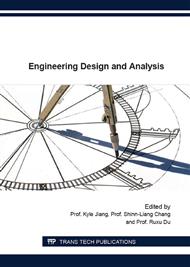p.28
p.35
p.40
p.45
p.50
p.55
p.61
p.66
p.71
Construction and Building of an Experimental Prototype of Solar Power Tower Plant
Abstract:
In this paper it is aimed to present the detailed design procedure of the first solar power system in Jeddah. A prototype of solar power tower system was built at King Abdulaziz University in Jeddah, Saudi Arabia where direct irradiation is very high. Heliostats were used to track the incident sun rays and focus the energy flow towards a solar receiver. The system consists of 10 heliostats directing incident solar rays to a tower of height about 7 meters. Two motors were used to control the heliostat rotational and elevation movements. A solar receiver made of alloy steel is installed at the top of the tower to collect solar energy reflected from the heliostats. A molten salt fluid consists of sodium and potassium nitrates (60/40) re-circulated in the receiver transfers the collected heat in the receiver to a storage tank. A cylindrical vessel with height of 1 m and diameter of 1.5 m was adopted for each of the cold and hot tanks. The design thermal power was 13 kW. The percentage error in the thermal power obtained is about 5.3%.
Info:
Periodical:
Pages:
50-54
Citation:
Online since:
February 2016
Authors:
Keywords:
Price:
Сopyright:
© 2016 Trans Tech Publications Ltd. All Rights Reserved
Share:
Citation:


